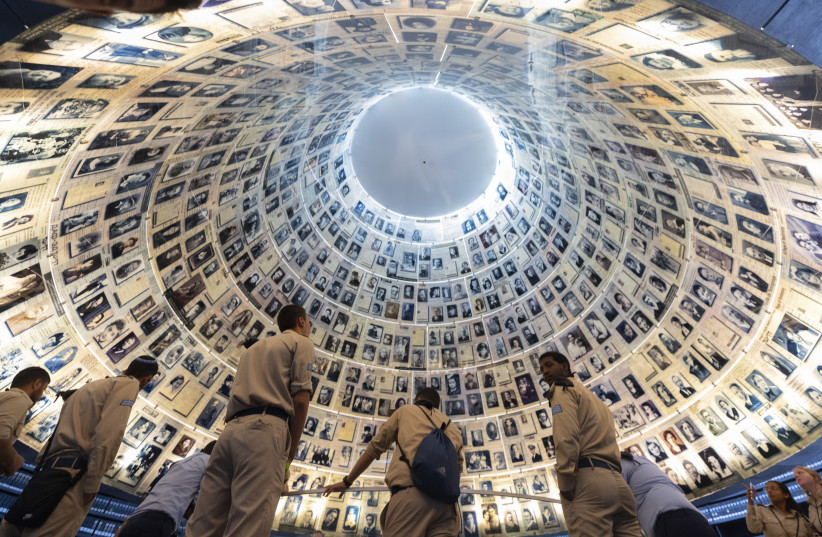Growing up in Argentina, many of my neighbors and family friends were Holocaust survivors. I saw the tattooed numbers and emotional scars that the Shoah left on my fellow Jews firsthand. So, despite having visited many countries and seeing different cultures, I chose not to travel to Germany and Austria. Even though I am very aware that the Germany of today is of course not Hitler’s Germany.
However, upon assuming the responsibilities of being the chairman of Yad Vashem, I realized that I would be called on to travel to these countries. And so, several months ago, I visited Austria for the first time. And now, I am preparing to embark on another first visit, this time to Germany.
I set out on my trip as the head of the World Holocaust Remembrance Center, a descendant of Holocaust victims and an Israeli Jew. I travel to Germany well aware of my profound responsibility to the past, the memory of the six million mothers and fathers, brothers and sisters, sons and daughters murdered less than 80 years ago by Nazi Germany and its collaborators simply because they were Jewish. I also undertake this journey out of my commitment to ensuring a better future for my people, my country and all humanity.

A new Yad Vashem exhibit of Holocaust artifacts
On my trip, I will be honored to open a new Yad Vashem exhibition, Sixteen Objects, initiated by the German Society for Yad Vashem (Freundeskreis), displaying unique Holocaust-era items, one from each of the federal states of Germany, from Yad Vashem’s world-class collections. It presents the individual stories of their Jewish owners in the context of their German background and thus is hoped to make a marked impact on all of those who visit.
Our empathy with the victims of the Holocaust is further enhanced when we consider their last wishes. As expressed by Gela Seksztajn, a brilliant Jewish artist from the Warsaw ghetto who was murdered at the Treblinka death camp, in her last will and testament written on August 1, 1942: “As I stand on the border between life and death, certain that I will not remain alive, I wish to take leave from my friends and my works... My works I bequeath to the Jewish museum to be built after the war. Farewell, my friends. Farewell, the Jewish people. Never again allow such a catastrophe.”
One way the world can know that Gela or any of the people featured in this exhibition once lived is through the everyday items they left behind. The viewing of objects similar to those we are so familiar with in our own daily lives can act as a bridge across time and space.
“When you listen to a witness, you become a witness.”
Elie Wiesel
As the late Holocaust survivor and Nobel Laurette Prof. Elie Wiesel stated, “When you listen to a witness, you become a witness.” Through the display of personal objects that tell the stories and perpetuate the memory of their original owners, we create a new generation of eye witnesses. As viewers sense their own human connection with personal items, they build empathy with groups of others and become more inclined to join humanity in a moral condemnation of unquestionable evil.
BY CONNECTING present generations with those whose lives and futures were brutally cut short, we uphold the essential truth and discredit those who cast doubt whether these events indeed took place or intentionally choose to distort and trivialize them. Holocaust-era artifacts are vital witnesses for the next generation and their stories are their testimony.
The display of sixteen Holocaust-era objects in the Bundestag, the governing democratic body of Germany, certainly exemplifies the commitment of the German leadership and how it is taking responsibility for past German crimes. The exhibition will encourage fact-based discussion, for example, about Anneliese Dreifuss and her sister Helga, who lived on Gerokstraße in Stuttgart.
After Anneliese and Helga’s world was turned upside down when their mother, Elsa, passed away in 1930, the last thing they could have imagined was that less than 10 years later they would lose their mother country, as well.
When their father, Max, a clothing store owner, was incarcerated in Buchenwald after the November 1938 pogrom, these two young girls were left alone. Viewing the original toy kitchen they once played with, we can appreciate what it might have felt like for two young orphans to live in such threatening surroundings. We can feel the fear of children caught up in a cruel world and empathize with them and with other individual victims.
It is incumbent on us to ensure that this commitment to remembering the Holocaust victims as individuals, with their personal attributes, aspirations, hopes and dreams, encompasses all citizens of our society. It is not sufficient to remember the Holocaust merely as another tragic event in the history of mankind.
Yad Vashem is committed to bringing the memory of the unprecedented nature of the Holocaust to present and future generations by commemorating each individual Jewish victim. Each individual’s story is unique. Each individual wanted the world to know of their existence.
The artifacts housed in the Mount of Remembrance in Jerusalem provide a window into a world that was and is no more, bearing everlasting witness to the atrocities their owners endured. Without these remnants, their memory and many other victims would fade into oblivion.
Through these items, the legacy of the Holocaust is transformed from the unfathomable “Six Million” to tangible, relatable individuals. By seeing, hearing and knowing these stories, we hope to abate the hateful comments we encounter all too often in the digital and physical spheres, and push Holocaust denial, distortion and trivialization back to the fanatical illegitimate fringes of society. In order to do that, we must first connect and remember.
The writer is the chairman of Yad Vashem, the World Holocaust Remembrance Center, in Jerusalem. He previously served as Israel’s consul-general in New York.
